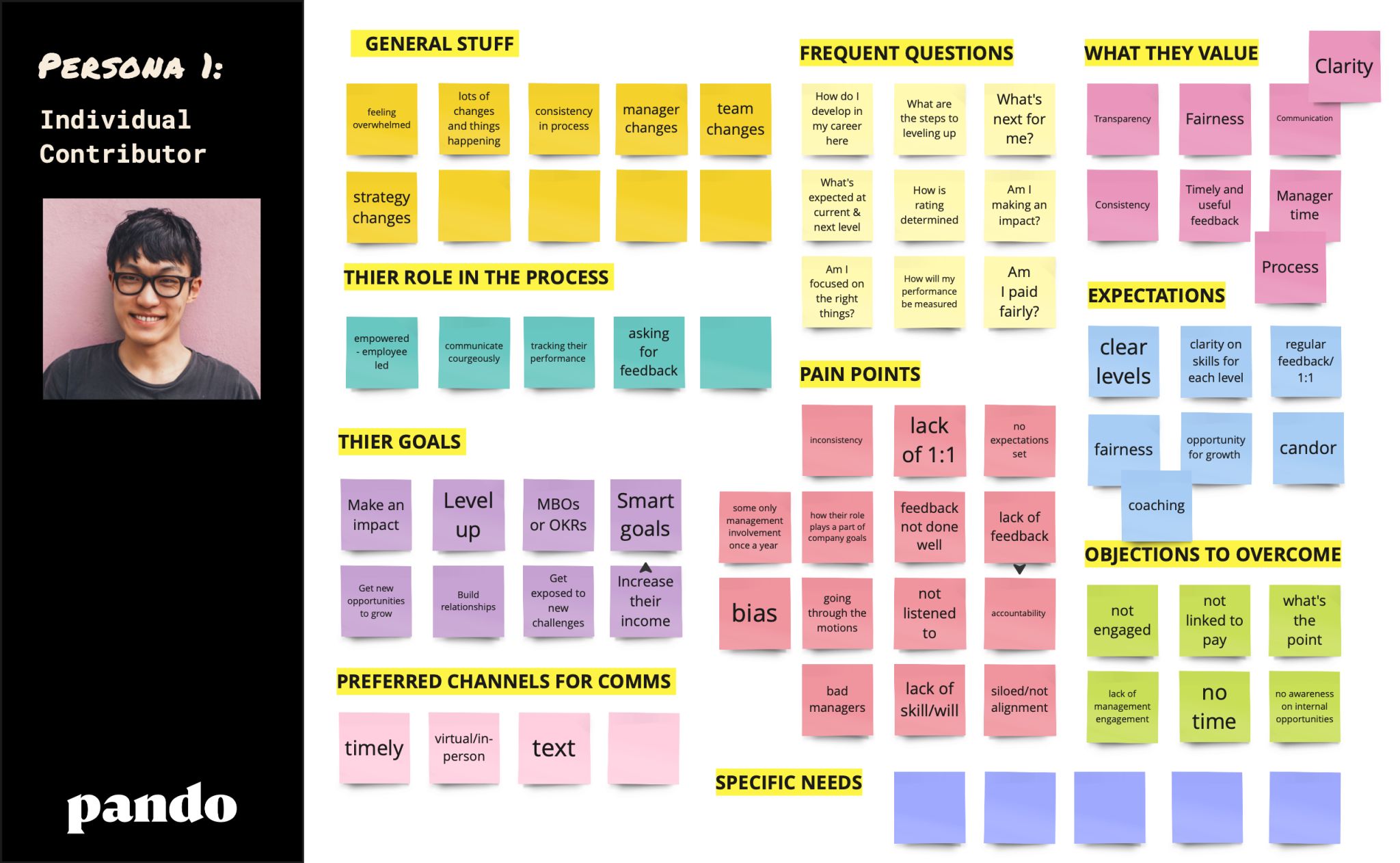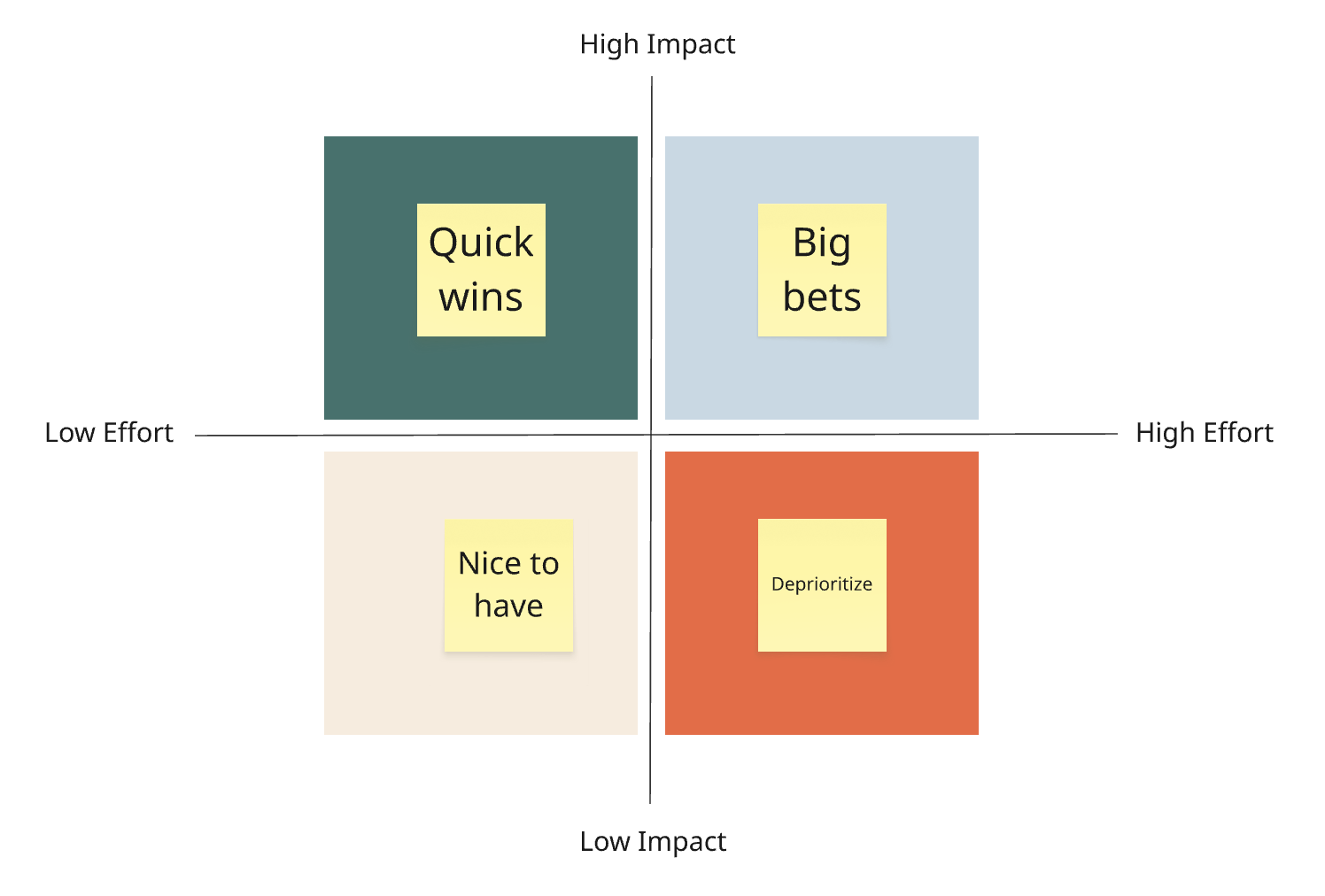
This is Part 2 of our 5-part series "The First People Leader's Guide to Building a People Function." If you missed Part 1, start with our Strategic Roadmap for Your First 90-days.
You understand the strategic importance of your first 90 days as a founding people leader. Now you need the tactical plan and frameworks to execute effectively. This deep dive will provide you the templates, guides, and implementation plans to set you up for success from day one.
Big picture thinking and strategy is critical to long term success, but your day to day execution are the small, iterative steps to take to achieve that long term vision. This part is designed to enable you to hit the ground running. In Part 1, we discussed having a product mindset, conducting a listening tour and gaining deeper context through auditing what's been done.
This post references advice, tactics and strategies from four serial first-time people leaders, all experienced at starting from scratch but also scaling organizations. Shelby Wolpa (Advisor to Series A-C companies), Heather Doshay (Partner at SignalFire), Kelli Dore (VP of People at Hi Rasmus), and Bryce Rattner Keithley (Founder at Great Team Partners) are our experts for this series and will be referenced throughout.
Here's a recap of the 90-day strategic checklist suggested in Part 1:
In the next section we will dive into how to run these sessions, aggregate feedback and synthesize that feedback into actions that will help shape your strategic plan for the function.
Building on the foundational approach introduced in our series opener, below are specific templates and tools you can leverage to conduct your listening tour.
Barbra Gago, the founder and CEO at Pando spent her career as a CMO prior to founding the company. That meant she spent a lot of time “listening”, here are her best practices for interviewing, listening and collecting feedback folks at your organization to ensure a well rounded perspective.
First—and this will come in handy later as well—group your employees (remember these are your new customers) into “segments.” Since we are thinking like a product manager, or in this case a product marketer, our first step is to group employees so that we can get relevant insights from all sides of the organization. To keep things simple (it is your first 90 days after all), let’s group employees into these three segments: Executives Leadership (or the “Leadership team”), Managers (anyone who has one or more direct reports), and Individual Contributors.
If your company is larger, you can consider additional groups like Executive team, senior leadership team, managers of managers, direct managers, and individual contributors. These are not grouped by titles but rather general roles that while even if they worked in entirely different functions, they would have similar overall experiences in terms of company operations.
Now that we have our three groups, lets think about what we want to understand about their experience at the company, what they think can be improved and what are their hopes or fears about a new People Leader joining and the start of the “people function.”
The questionnaires below will not only help you gain helpful context, but they will also help you start thinking about these employee segments as personas, and this will help you design the right set of programs to solve their unique problems or pain points.
It’s helpful if all your interviews are structured in the same way, and the questions are generally the same. It doesn’t mean you can’t ask follow up questions, you should where it makes sense even if it’s not a pre-set question. But having a consistent structure will make them go smoother, you’ll be more comfortable asking the questions, and the structure will help you get through all the questions in time.
Duration: Varies by segment
Format: Zoom is ideal to capture transcripts
Interviewee details: Name, job title, tenure, size of team, location (remote, co-located, in-office), proximity to CEO/founders
We suggest doing all your meetings over zoom, or using a zoom meeting even if you are live to easily capture transcripts from your conversation, this will make it easier to get insights from your meetings later.
Interview Questions:
These are open-ended questions, your goal is to let them talk and just listen, and ask follow up questions where it makes sense to dig deeper, but it is not the time of offer solutions, suggestions or input.
Segment 1: Executive Questions (30-45 minutes)
These interviews on your listening tour can be a goldmine of quick wins and sussing out the low hanging fruit as well as the unspoken potential bottlenecks or conflicts that are impacting the team. Kelli Dore, VP of People at Hi Rasmus recalls looking at the candidate pipeline for a bunch of open roles and realizing “none of these candidates fit what we’re trying to solve here." There wasn’t a great structure in place to figure how who they needed to hire, and how they would assess that talent.
“I identified a low hanging fruit — before we launched all these new roles, we were going to redo the job descriptions, create scorecards, map interview questions, and create interview plans.” Kelli says, this is the high impact work that helps you gain credibility quickly and also streamline processes that improve outcomes for the company right away.
Segment 2: Managers Questions (20-30 minutes)
Segment 3: Individual Contributor Questions (15-20 minutes)
How many interviews do you conduct?
In Kelli’s case, Hi Rasmus is 40 people so she talked to every single person in the organization. Heather Doshay, Partner at SignalFire says that at a larger organization you won’t have the opportunity to talk to everyone so you want to make sure you have a good sampling of folks, and also ask for volunteers. She found that there are some people dying to connect with you, and these are usually people who will be champions you can partner with later (think of them as your product evangelists).
Representative Sampling for Larger Companies:
Pro-tip, one of your deliverables our outcomes of these conversations can also be the start of "Employee Personas". This is something you could do in your first 90-days to help align the org on what your employee population thinks, and needs, as well as help guide you to mapping programs and initiatives over the next 6-12 months. Below is example of a person profile and here's a link to the template.

Making sense of all your conversations and research can be overwhelming. So we’ve created this prompt to help you turn your raw interview notes or transcripts into actionable insights.
Go to listening tour insights prompt
What this prompt delivers:
The prompt also enables mapping exact quotes to key points to reinforce the narrative and make your insights more concrete, especially when sharing them with the team.
Notes: When conducting your interviews/listening tour, be sure to record your session if remote, or take notes so that you can leverage the meeting transcripts and raw notes for AI support in helping you structure insights from what you’ve learned in these conversations.
Building on Heather's discovery at Webflow and others, here's the systematic approach to auditing your current state before building new systems. Building a people function is a lot about programs and tools to enable the business. It's smart to start with people and work your way out to tools: People, process, tech. So our audit outline will follow that format.
One of the most crucial discoveries is identifying internal champions early. Heather shared a perfect example: "When I joined Webflow, 4 people from across the company, messaged me on my first, all saying, 'I'm so excited you're here. I've been wanting to talk about [insert the program you are passionate about].'"
Heather warns: "These champions become your allies in implementing any program. They're often the most vocal critics if you miss their needs, but they become your strongest advocates when you include them in the solution."
Champion Identification Tactics:
Kelli says bringing the company along is a powerful approach to building credbility and gaining early buy-in: "Every part of the organization was involved in growing the organization. I had champions across the entire data team. I couldn't have done my job without them."
With your listening tour complete and audit findings documented, you can now create a draft roadmap that addresses real problems rather than implementing generic "best practices."
As Shelby Wolpa, who's built four unicorn people functions, warned in Part 1: "What I often see with earlier people leaders is they say yes to everybody, to please everybody. But then they spread their time and energy too thin, and everything kind of sucks."
Bryce's offers a solution to help narrow your focus. The Jobs-to-be-Done Framework comes straight from product management. Rather than instinct-driven decisions, Bryce advocates for product thinking: "My favorite thing to use is the "jobs to be done" framework,...It takes some of the expectation or fear away that HR is going to be an instinct driven, or a preferences driven practice, and instead, orients all of the cross functional stakeholders to say, What are we trying to achieve collectively as a team?"
Jobs to Be Done (JTBD) is a framework asserting that customers "hire" products and services to accomplish specific tasks or "jobs" in their lives (in the case of HR, your customers are your employees and the product are your programs or the employee experience you create). Framing pain points, challenges and opportunities in the context of "a job to be done" helps you and teams get to the core of the issue and break down bigger problems into bite-sized problems which can be solved much easier. (Format = Context -> Job -> Motivation -> Outcome)

Bryce emphasizes that this approach shifts conversations from "I want this" to "we need to accomplish this," creating shared accountability for results.
Jobs-to-be-done examples:
1. Executive Leader
JTBD: When I am reviewing the company’s performance, I want clear visibility into how individuals and teams are performing, so I can make informed decisions that drive business growth and ensure accountability.
2. Manager
JTBD: When I am managing my team, I want an easy way to coach and develop individuals with limited time, so I can help them grow while still delivering on business priorities.
3. Employee
JTBD: When I am setting my goals, I want confidence they align with company priorities, so I can focus my efforts on what truly moves the needle and feel valued for my contributions.
Another useful structure to create is an impact x effort matrix. This helps you quickly identify low hanging fruit, while clearly understanding what can be deprioritized.

The final critical step is documenting everything and getting explicit agreement from leadership. As Shelby discovered: "Just writing it down and documenting it and sharing it as user research and insights builds credibility and makes people feel they are part of the process." Being transparent with your work and showing how you're leveling insights will build a lot of trust, especially if you are a first time Head of People, but it's helpful in any context or role.
This approach also prevents the common scenario where "people leaders go by gut instinct and think they have a definition in their mind of what the people team remit is, and the founder has some other list in their mind" says Shelby.
Your documentation should include:
Listen and Learn
Audit Everything
Strategic Planning
Execution and Alignment
Remember: Your goal isn't to fix everything in 90 days—it's to build the foundation for systematic, sustainable improvements that will scale with your company's growth.
Stay tuned for Part 3: Unknown-Unknowns, pitfalls to avoid and recovering from failure
Pando is the first of its kind employee progression platform. We help organizations build continuous performance programs to drive high performing teams. Pando helps companies design and develop leveling, career frameworks and lightweight performance programs that drive results. Learn more at pando.com.